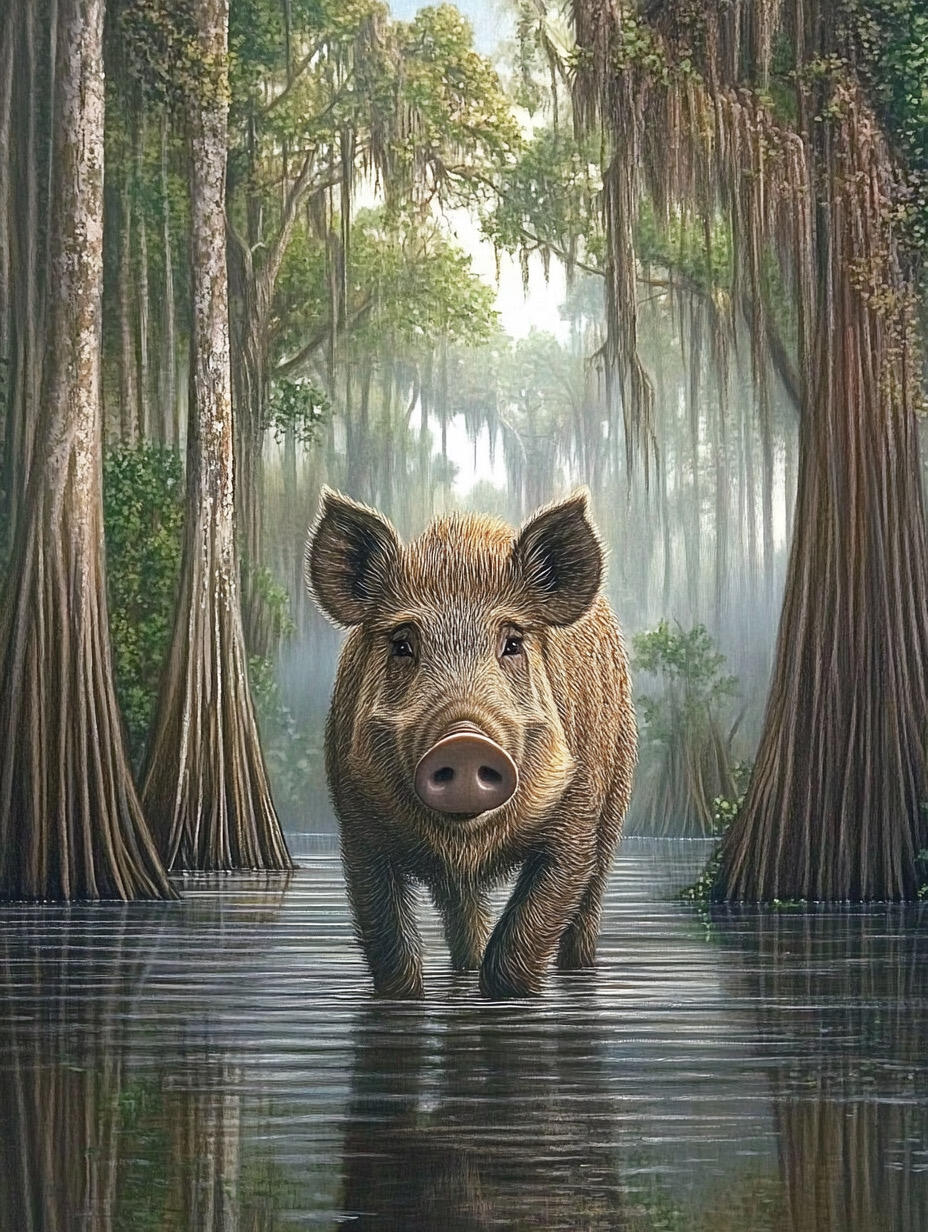Myu Lansky on Nostr: Wild invasive hogs, or feral pigs, were introduced to Florida primarily by European ...
Wild invasive hogs, or feral pigs, were introduced to Florida primarily by European settlers in the 1500s. Spanish explorer Hernando de Soto brought domestic pigs to the area as a food source during his expedition. These pigs escaped or were released into the wild, and over time, their populations grew rapidly, adapting to the local environment and becoming feral. Additional introductions occurred in later centuries, including by hunters and farmers who brought in pigs for various purposes, further contributing to the population.
In terms of ecological importance, wild hogs can help in some ways, such as by rooting through the soil, which may contribute to seed dispersal or aerate the soil.
However, wild hogs’ destructive nature and impact on Florida's ecosystems and agriculture far outweigh any potential benefits. Wild pigs can devastate crops, threaten native species by competing for food and spreading diseases, and damage sensitive ecosystems.
The harm these hogs cause is significant, and managing their population is critical to protecting Florida's environment and economy.
That being said, if you have never shot mammal before it can be disturbing. This is especially true if you are on a canned hunt where the dogs corner the hog and it is looking at you, knowing that it’s in its final moments. Also, the meat doesn’t taste very good if you’re used to eating domesticated pork.
You may consider having a guide take you on a hog hunt if you are into that type of toxic masculinity.
#InvasiveSpecies #FerralHogs

Published at
2025-03-20 00:37:10Event JSON
{
"id": "a055ecc343d4390445a6a25d5bee9048a363f20f47bbf215913339b41f07634d",
"pubkey": "0d48e7aa721c3c2f90df83030e86066e82d46edcf94a6ae48db0f43b3ac0d920",
"created_at": 1742431030,
"kind": 1,
"tags": [
[
"imeta",
"url https://image.nostr.build/80e4a8a207628ca846c0e53014e3e5c11a00bee3b18b4d0ffcfa24c2c96080cf.jpg",
"blurhash eHD]k;Rj01%Mi_~oj?D*og%ME1t7ofM|tRIBt7kWV@fPV@aeozj?V@",
"dim 928x1232"
],
[
"t",
"invasivespecies"
],
[
"t",
"ferralhogs"
],
[
"r",
"https://image.nostr.build/80e4a8a207628ca846c0e53014e3e5c11a00bee3b18b4d0ffcfa24c2c96080cf.jpg"
]
],
"content": "Wild invasive hogs, or feral pigs, were introduced to Florida primarily by European settlers in the 1500s. Spanish explorer Hernando de Soto brought domestic pigs to the area as a food source during his expedition. These pigs escaped or were released into the wild, and over time, their populations grew rapidly, adapting to the local environment and becoming feral. Additional introductions occurred in later centuries, including by hunters and farmers who brought in pigs for various purposes, further contributing to the population.\n\nIn terms of ecological importance, wild hogs can help in some ways, such as by rooting through the soil, which may contribute to seed dispersal or aerate the soil. \n\nHowever, wild hogs’ destructive nature and impact on Florida's ecosystems and agriculture far outweigh any potential benefits. Wild pigs can devastate crops, threaten native species by competing for food and spreading diseases, and damage sensitive ecosystems. \n\nThe harm these hogs cause is significant, and managing their population is critical to protecting Florida's environment and economy.\n\nThat being said, if you have never shot mammal before it can be disturbing. This is especially true if you are on a canned hunt where the dogs corner the hog and it is looking at you, knowing that it’s in its final moments. Also, the meat doesn’t taste very good if you’re used to eating domesticated pork.\n\nYou may consider having a guide take you on a hog hunt if you are into that type of toxic masculinity. \n\n#InvasiveSpecies #FerralHogs https://image.nostr.build/80e4a8a207628ca846c0e53014e3e5c11a00bee3b18b4d0ffcfa24c2c96080cf.jpg ",
"sig": "a31c67c7883f05aa311fec029eb121d4d1e7111fe8b44e71fe71c69b3cf91c75ee44dbcd6e27b02338fbefa48edb3428d4a5118d18612e2dfa95ec8d9af26dfe"
}

